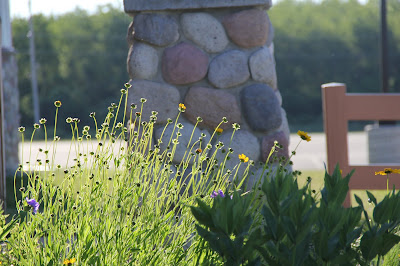I call this activity a walk, but it is really more of a slog (defined as a long, tiring walk or march as per dictionary.com). A person does not tiptoe lightly through a swamp, but slogs through the mucky bottom that threatens to suck the boots off your feet. If you are lucky you can step from sedge tussock to sedge tussock of log to log, but at some point you are forced into the muck. The giant Skunk Cabbage (Symplocarpus foetidus) leaves in the photo below indicate a location with out firm footing. Notice the Sensitive Fern (Onoclea sesibilis) at the bottom left of the photograph? Surrounded by Skunk Cabbage leaves, this is just the sort of image I was looking for when I entered the swamp.
First is a horizontal image. I like this image with the degree of contrast between the fern and Skunk Cabbage leaves and the differing areas of light and shadow. I also like the smaller fern leaf poking through the leaves to the right of the picture.
Now here is the same central leaf zoomed in closer and in a vertical composition. This image is all about the fern leaf; it is basically a portrait of the fern with the Skunk Cabbage leaves acting as a backdrop. I like both images. Which one do you think works better? If you have an opinion, let me know in the comment section.
In another portrait of a Sensitive Fern, a small fern frond peeks between the lobes of a larger leaf.
In one section of the Mission Creek swamp, Cinnamon Ferns are by far the most prominent and charismatic plant that you can see this time of year.
I was especially drawn to the red fertile fronds. They really stick out against the green background of the fern's fronds.
Although, these pictures are not as "artistic" as the fern photo that I shared last week, I still really like their overall appearance, especially on this final image. The bright green and red compliment each other well and there is enough texture to keep me interested in the photo's various elements.



















































